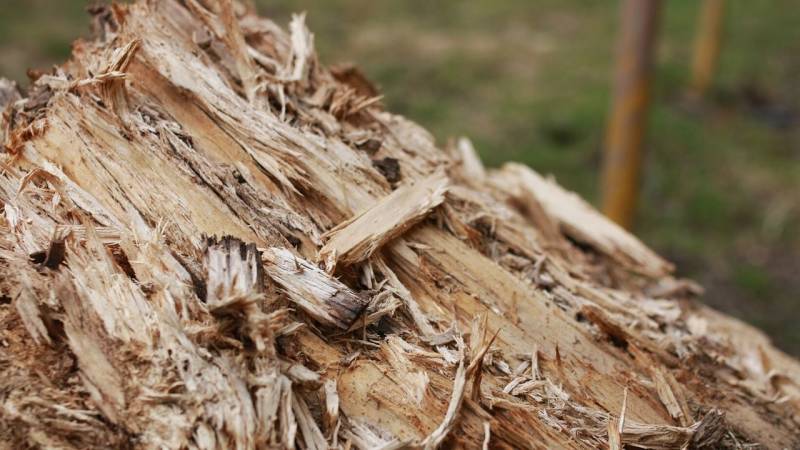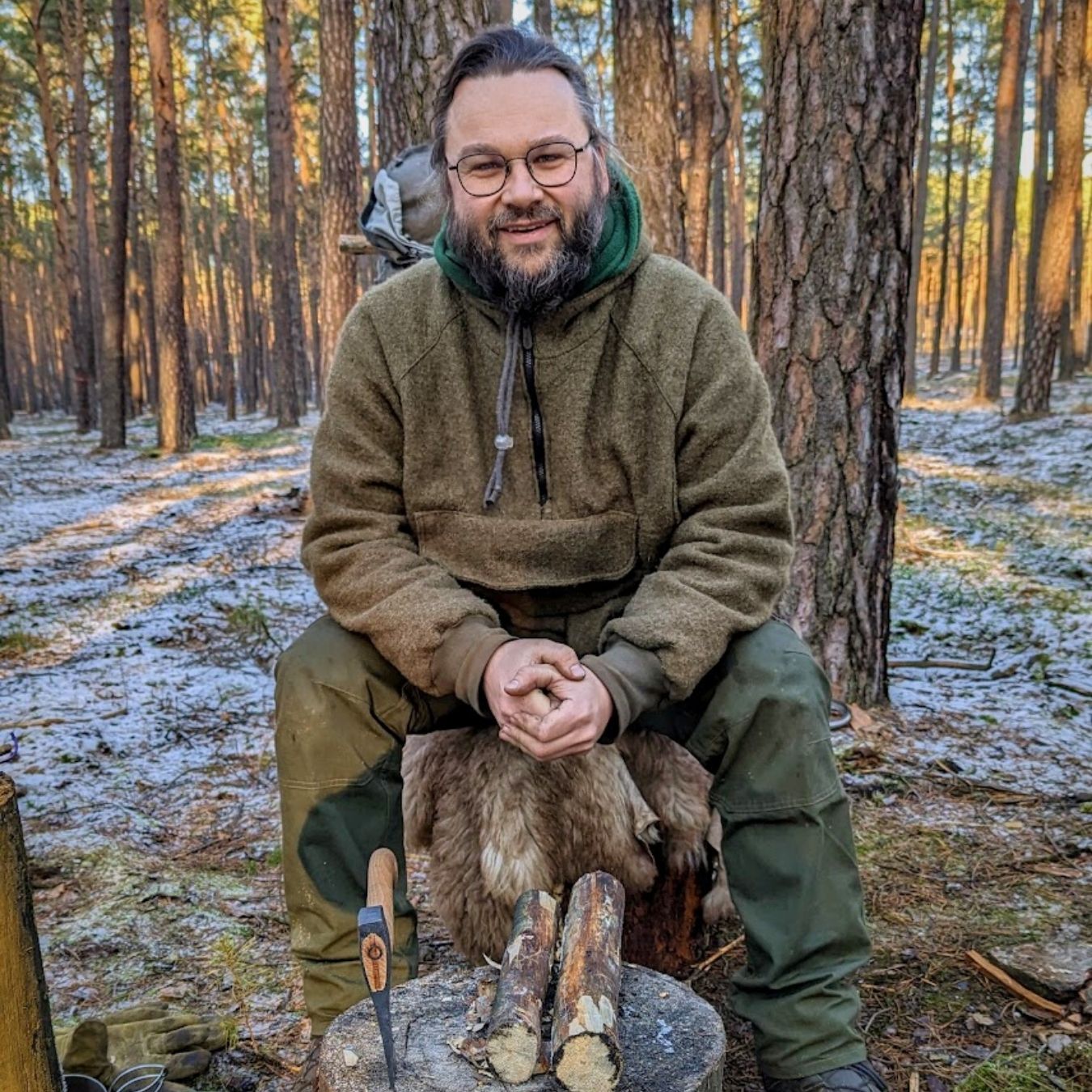
Punk Wood
Substantiv/Nomen
Meaning
Punk wood is a crucial resource for survivalists, bushcraft enthusiasts, and outdoor adventurers. It refers to the decayed, soft, and crumbly wood found in dead trees or fallen branches. This wood is highly flammable and can be easily ignited with a spark or flame, making it an excellent fire-starting material in emergency situations. Punk wood is abundant in the wilderness and can be identified by its dark color, lightweight, and spongy texture. It is an essential tool for creating fire, providing warmth, cooking food, and signaling for help. Mastering the art of finding and utilizing punk wood is a fundamental skill for anyone venturing into the great outdoors.

Examples
„I love using punk wood to start my campfire. It's so easy to ignite and burns slowly, providing a steady source of heat.“
„When I was out in the wilderness, I found some punk wood and used it to make a makeshift torch. It gave off a bright flame and helped me navigate through the dark forest.“
„My friend and I were discussing different fire-starting methods, and he mentioned that punk wood is his go-to choice. He explained that it's lightweight, compact, and highly flammable, making it perfect for survival situations.“
„During a camping trip, I taught my fellow campers how to identify punk wood. We gathered some and used it to start a cozy campfire, creating a warm and inviting atmosphere.“
„In a survival scenario, having punk wood in your backpack can be a game-changer. It's an excellent fire starter, even in wet conditions, and can provide much-needed warmth and comfort in the wilderness.“
Origin
The word "Punk Wood" originates from the English language and has its roots in the world of wilderness survival and bushcraft. It refers to a specific type of wood that is commonly used to start fires in outdoor settings.
The term "Punk Wood" is believed to have derived from the Old English word "punc," which means rotten or decayed. This is because punk wood is typically found in decaying trees or fallen logs, where it has undergone a natural process of decomposition.
Throughout history, humans have recognized the value of punk wood as a reliable source of tinder for fire-making. The porous and fibrous nature of punk wood allows it to catch fire easily and burn slowly, making it an ideal material for starting and sustaining fires in survival situations.
In the context of bushcraft and survival skills, the use of punk wood has evolved over time. It is often collected and prepared by experienced outdoorsmen and women who understand its properties and how to effectively utilize it for fire-making purposes.
Today, punk wood remains an essential component of many survival kits and is highly regarded among outdoor enthusiasts. Its availability in nature and its reliable ignition properties make it a valuable resource for those venturing into the wilderness.
Synonyms
Punk wood, Tinder fungus, Touchwood, Amadou, Horse's hoof fungus, Hoof fungus, Tinder conk, Fire sponge
Antonyms
Soft wood, Rotten wood, Decayed wood, Wet wood, Green wood, Hardwood, Seasoned wood, Dry wood
Relatives
Firewood, Tinder, Kindling, Fire starting, Bushcraft, Survival, Natural materials
Historical and cultural importance
Punk wood, also known as tinder fungus or amadou, has a long history of use in various cultures around the world. It has been used for centuries as a reliable source of fire starting material, making it an essential tool for survival in the wilderness.
In many indigenous cultures, punk wood was highly valued for its ability to catch and hold a spark, making it an invaluable resource for starting fires. It was often used in combination with flint and steel or other primitive fire-starting methods.
One notable example of the historical significance of punk wood is its use by the ancient Egyptians. They used it to create fire for various purposes, including cooking, warmth, and protection from wild animals. The Egyptians even believed that fire had magical properties and was a symbol of life and rebirth.
In addition to its fire-starting properties, punk wood has also been used for medicinal purposes. It was believed to have healing properties and was used to treat various ailments, such as wounds, infections, and respiratory issues.
Today, punk wood continues to be used by survivalists, bushcraft enthusiasts, and outdoor adventurers. Its lightweight and compact nature make it easy to carry in a survival kit, and its ability to catch and hold a spark makes it a reliable fire-starting material in any weather conditions.
Whether you're a seasoned survivalist or just starting to explore the world of bushcraft, understanding the historical and cultural relevance of punk wood can deepen your appreciation for its importance in the realm of wilderness survival.
More information about the term Punk Wood
Punk Wood: The Secret Weapon for Fire Starting
When it comes to survival in the wilderness, fire is your best friend. It provides warmth, light, and the ability to cook food. But starting a fire can be a challenge, especially if you don't have the right materials. That's where punk wood comes in. This often overlooked resource is a secret weapon for fire starting.
What is Punk Wood?
Punk wood, also known as tinder fungus or amadou, is a type of wood that has been naturally decomposed by fungi. It is usually found on dead or decaying trees, and has a distinct spongy texture. This unique texture makes punk wood highly flammable and easy to ignite.
Why is Punk Wood Ideal for Fire Starting?
There are several reasons why punk wood is the ideal material for starting a fire:
1. Readily Available: Punk wood can be found in most forested areas, making it easily accessible for survival situations.
2. Waterproof: Unlike other fire starting materials, punk wood remains dry even in wet conditions. This is because the decomposed wood fibers create a natural barrier against moisture.
3. Easy to Ignite: Due to its spongy texture, punk wood ignites quickly and burns at a slow, steady pace. This allows you to build a sustainable fire without wasting valuable resources.
How to Identify Punk Wood
Identifying punk wood is relatively easy once you know what to look for:
1. Spongy Texture: Gently press your finger against the wood. If it feels soft and spongy, you've likely found punk wood.
2. Distinct Color: Punk wood is usually dark brown or black in color, often with visible fungal growth.
3. Presence of Fungal Pores: Look for small, round pores on the surface of the wood. These are the entry points for the fungi that decompose the wood.
How to Use Punk Wood for Fire Starting
Using punk wood to start a fire is a straightforward process:
1. Prepare Your Tinder Bundle: Gather a small bundle of dry, flammable materials such as dry leaves, grass, or small twigs.
2. Prepare the Punk Wood: Break off a piece of punk wood and fluff it up to expose the inner fibers.
3. Ignite the Punk Wood: Use a fire starter or a spark from a ferro rod to ignite the punk wood. Blow gently on the ember to encourage it to grow.
4. Transfer the Ember: Carefully transfer the burning punk wood ember to your tinder bundle, gently blowing on it to help the flames spread.
5. Build Your Fire: Gradually add larger sticks and logs to the growing flame, building your fire to the desired size.
Conclusion
Punk wood is a valuable resource for any survivalist or outdoor enthusiast. Its availability, waterproof nature, and ease of ignition make it an essential tool for fire starting in the wilderness. So next time you find yourself in need of a fire, keep an eye out for punk wood and unlock the secret to successful fire starting.
Back to overview

